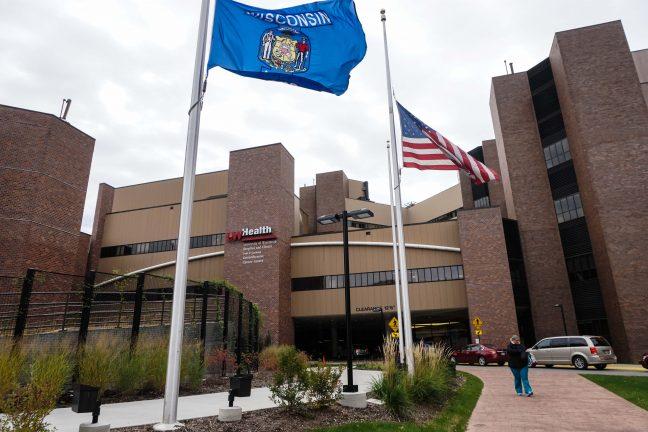University of Wisconsin researchers are hoping to gain information to stop cancerous cells by learning what makes the cells change.
By studying chemical changes and creating modifications to those chemicals, Wei Xu, a professor in Cancer Research at the UW Carbone Cancer Center and McArdle Library for Research, has found why some cells go down a cancerous pathway.
Xu said cells either continue in their healthy state or they produce cancer cells using energy.
“Calorie restriction, without malnutrition, has significant benefit for cancer prevention,” Xu said. “From the therapeutic aspects, pharmacological intervention in metabolism shows great promise for cancer treatment.”
Small molecules may lead to anticancer agents, Xu said, which would happen through the process of inhibiting glycolysis.
UW researchers are currently looking to modify chemicals within the metabolism of proteins, Xu said. Without modification, the chemicals can increase the rate of cells choosing to go down a cancerous route.
Xu said Otto Warburg discovered what is known as the “Warburg effect,” or the loss of a steady energy metabolism.
Warburg noticed cancerous cells produce more energy, Xu said, and afterward, create more lactic acid fermentation in the cytosol in a process is known as aerobic glycosylation.
Healthy cells should be relying on mitochondria to produce energy in a process called oxidative phosphorylation, Xu said.
“Nearly a decade ago, scientists discovered that tumor-specific isoform of pyruvate kinase, PKM2, the last enzyme in the glycolysis pathway, give rises to Warburg effect, but how PKM2 levels translated to more aggressive cancers remains to be a dilemma,” Xu said.
Studies of modified PKM2 could lead cells to a cancerous metabolic pathway, Xu said. This differed from PKM2 that wasn’t modified, which leads to a healthy metabolic pathway.
Xu said she was inspired to test nutrient utilization in cancer cells “by luck.” Her lab had been studying CARM1, a protein typically found in breast cancer patients.
“In a biochemical assay to map CARM1 interacting protein, we accidentally found that CARM1 interacts with and chemically modifies PKM2 in breast cancer cells,” Xu said. “We engineered cells to only vary at PKM2 modification status and noticed significant differences in energy metabolism.”
The researchers at Xu’s lab concluded a modified form of PKM2 led to a difference in cancerous cells from normal cells. When modified, PKM2 is more prone to tumor growth, Xu said.
“Regardless of the oxygen availability, about 85 percent of pyruvate will be metabolized to lactate not CO2,” Xu said. “In addition, compared to normal differentiated cells, cancer cells take up much more glucose for energy production and macromolecules synthesis.”
One of Xu’s research colleagues, Fabao Liu, a lead author and postdoctoral fellow, grew more interested in nutrient utilization after studying aerobic glycolysis.
With regard to aerobic glycolysis, Liu said inhibition of glucose uptake of cancerous cells will ultimately lower tumor growth. This relates back to the energy homeostasis regulation of PKM2 methylation.
PKM2 methylation by CARM1 changes the glucose metabolism balance, Liu said. Essentially, it reverses the balance by changing from oxidative phosphorylation to aerobic glycolysis in breast cancer cells.
Xu said the nanoparticle for the delivery of PKM2 was studied in accordance with her collaborator, Sarah Gong.
Gong helped further research with breast cancer cells with regard to PKM2. As a team, Gong and Xu used nanoparticles to deliver a small amount of PKM2 into a form of modified PKM2 in breast cancer cells.
Xu said their results revealed the peptide inhibitor “perturbs the metabolic energy balance.” This happens within cancerous cells, where the energy balance can help reduce tumors as well as help reduce metastatic reach to other organs.
The team hopes to continue working on the study of PKM2 and CARM1 in relation to putting a hold on the pathway of cancerous cells.
“If we can figure out what genes or pathways trigger the glucose reprogramming in cancer cells, maybe we could find some new ways to target cancer cells,” Liu said.


